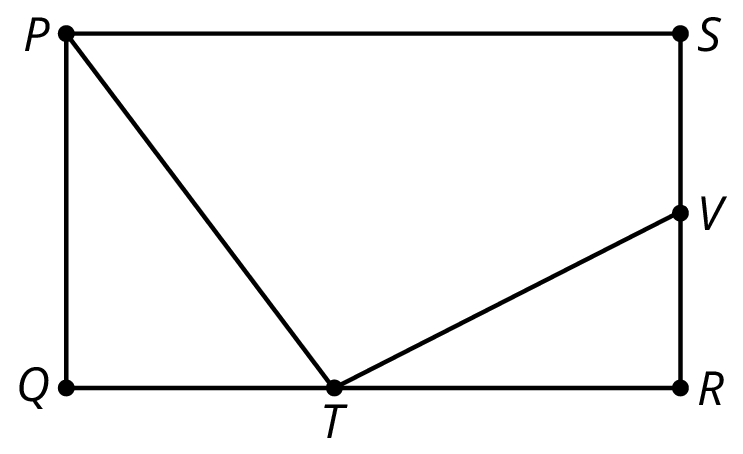 MONTGOMERY COUNTY PUBLIC SCHOOLS
MONTGOMERY COUNTY PUBLIC SCHOOLS
 MONTGOMERY COUNTY PUBLIC SCHOOLS
MONTGOMERY COUNTY PUBLIC SCHOOLS
This week your student will be working with some relationships between pairs of angles.

Here is a task to try with your student: Rectangle

Solution:
This week your student will be drawing shapes based on a description. What options do we have if we need to draw a triangle, but we only know some of its side lengths and angle measures?


Here is a task to try with your student: Using each set of conditions, can you draw a triangle that is not an identical copy of the one shown?


Solution:


This week your student will be thinking about the surface area and volume of three-dimensional figures. Here is a triangular prism. Its base is a right triangle with sides that measure 12, 12, and 17 inches.

In general, we can find the volume of any prism by multiplying the area of its base times its height. For this prism, the area of the triangular base is 72 in2, so the volume is
To find the surface area of a prism, we can find the area of each of the faces and add them up. The example prism has two faces that are triangles and three faces that are rectangles. When we add all these areas together, we see that the prism has a total surface area of
Here is a task to try with your student: The base of this prism is a hexagon where all the sides measure 5 cm. The area of the base is about 65 cm2.

Solution:
IM 6–8 Math was originally developed by Open Up Resources and authored by Illustrative Mathematics, and is copyright 2017-2019 by Open Up Resources. It is licensed under the Creative Commons Attribution 4.0 International License (CC BY 4.0). OUR's 6–8 Math Curriculum is available at https://openupresources.org/math-curriculum/.